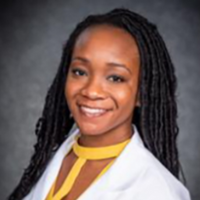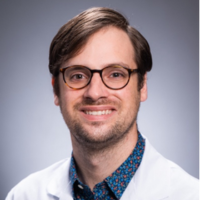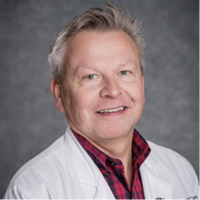The UAB Department of Radiology, which serves a critical role in support of the comprehensive patient care provided by the UAB Health System, is making strides in promoting diversity, equity, and inclusion in medicine. In honor of Pride Month, the Heersink School of Medicine Office for Diversity and Inclusion is sharing the initiatives implemented in radiology to create a welcoming environment for patients, students, and faculty members. Radiology has taken on a number of intentional activities that foster a culture of respect and understanding. From supporting LGBTQ+ pride month activities to encouraging faculty to include sexual orientation and gender identity (SOGI) data in their research, the department is leading the way in creating a more inclusive healthcare system.
Heersink ODI spoke to Department of Radiology Fellow in the Abdominal Imaging Section, Jordan Perchik, M.D., Chair for UAB Radiology Diversity, Equity, and Inclusion Committee, Desmin M. Milner, M.D., and professor and director of the UAB Center for Palliative and Supportive Case, Rodney Tucker, M.D.—each who have been instrumental in implementing several initiatives to foster diversity and inclusion in healthcare. One example being the development of intake forms that allow patients to state pronoun preferences to help ensure that all patients receive high-quality care.
Training & Mentoring
E mbracing diversity, equity, and inclusion in the radiology department starts at the top. The department’s leadership team encourages sensitivity training for staff to raise awareness of microaggressions that may harm patients and create a hostile work environment. The department has also worked to recruit and retain LGBTQ+ faculty, staff, and trainees. One example is their program that pairs LGBTQ+ medical students with faculty mentors who can offer guidance and support.
mbracing diversity, equity, and inclusion in the radiology department starts at the top. The department’s leadership team encourages sensitivity training for staff to raise awareness of microaggressions that may harm patients and create a hostile work environment. The department has also worked to recruit and retain LGBTQ+ faculty, staff, and trainees. One example is their program that pairs LGBTQ+ medical students with faculty mentors who can offer guidance and support.
As Desmin explains, work like this is what drew her to be chair of the department’s DEI Committee, “Radiology is probably one of the least diverse medical specialties. And, being an underrepresented minority by being female and being African American, I’m always on the lookout for how to be more inclusive and provide a gateway for people who are underrepresented in medicine—be it by race, ethnicity, gender, or sexual orientation.”
Policy Audits
 Perchik also emphasized the importance of an inclusive approach in the department’s work, explaining that promoting diversity is crucial for providing equitable care to all patients, especially those who belong to marginalized groups, such as people of color and LGBTQ+ individuals. By prioritizing DEI in medical education and patient care, the department aims to address these disparities and improve patient health outcomes. Perchik's work in diversity and inclusion started with a wake-up call moment when a transgender medical student at UAB brought to light the gaps in the department's approach to transgender and non-binary individuals. Afterward, the department performed a systematic audit of its policies, procedures, and facilities to identify and address gaps in inclusivity.
Perchik also emphasized the importance of an inclusive approach in the department’s work, explaining that promoting diversity is crucial for providing equitable care to all patients, especially those who belong to marginalized groups, such as people of color and LGBTQ+ individuals. By prioritizing DEI in medical education and patient care, the department aims to address these disparities and improve patient health outcomes. Perchik's work in diversity and inclusion started with a wake-up call moment when a transgender medical student at UAB brought to light the gaps in the department's approach to transgender and non-binary individuals. Afterward, the department performed a systematic audit of its policies, procedures, and facilities to identify and address gaps in inclusivity.
Non-gendered Language and Deadnaming
While there is still work to be done, the department has made progress. From using non-gendered language—such as they/them, spouse, partner, child, y’all, firefighter, postal worker, etc.—to asking individuals what their pronouns are and avoiding deadnaming (calling a person by their name given at birth or prior to transitioning), these initiatives are as simple as they are necessary. Small steps like this can be implemented as initiatives within departments or conscious efforts taken by individuals every day.
Pride Month Activities
 To kick off Pride Month, the LGBTQ+ Faculty Association hosted an event on June 2nd to celebrate the community and encourage unity in diversity. Attendees had the opportunity to network with colleagues while enjoying good food, drinks, and music.
To kick off Pride Month, the LGBTQ+ Faculty Association hosted an event on June 2nd to celebrate the community and encourage unity in diversity. Attendees had the opportunity to network with colleagues while enjoying good food, drinks, and music.
The Heersink ODI LGBTQ+ Faculty Association encourages departments to hold related events throughout the month. Events like this are important both in terms of visibility and inclusivity, as Tucker explains,